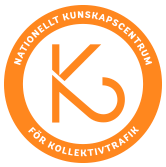The creation of an efficient public transport system requires collaborations between formal independent organizations. This paper examines collaborations between public and private organizations and passengers, with the aim of contributing to the conceptual understanding of collaborations on public transport. The study begins by describing previous research on collaboration in the public transport area and in other research fields analytically relevant for public transport. Accordingly, collaboration is defined as an attempt to overcome problems with collective action and to transform a situation in which the various organizations operate independently into a situation where they act in concert to achieve shared objectives. The collaboration process involves the establishment of joint rules and structures that govern the relationship and behavior of the organizations. According to this definition, collaboration is a more sophisticated form of collective action than is indicated by terms such as “co-operation” or “coordination”. Fully-functioning collaboration can be described as a form of “co-action”, as opposed to “individual action”. In co-action, formal independent organizations together reap the benefits of working together and achieve more than if they had acted alone. Co-action can be regarded as a gradual trust-building process that requires qualities such as mutual confidence, an understanding of other organizations’ motivations, and joint problem formulation.
